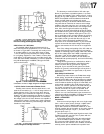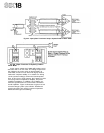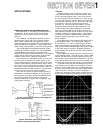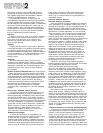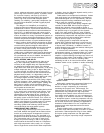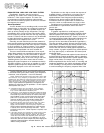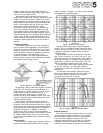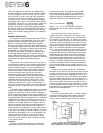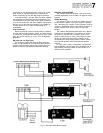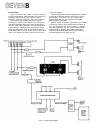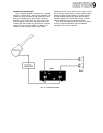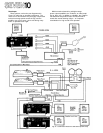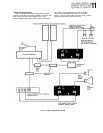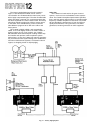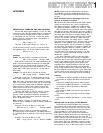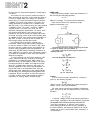
frequencies or very high frequencies, such as RF oscilla-
tions. Some 70-volt transformers have attached pro-
tection capacitors for use with high frequency drivers.
"Auto-transformers" (all taps from the same winding)
are sometimes used to match speaker impedances. The
auto-transformer provides many of the same protections
as a 70-volt transformer, with the exception that because
the taps are all from the same winding, it is possible for
a small amount of DC current to leak through to a
loudspeaker.
Passive Crossovers
Because a passive crossover usually inserts a capacitor
in
series
with
the
high
frequency
driver,
and
often
inserts
an
inductor
in
series
with
the
low
frequency driver (which
limits the current reaching it), it can aid in loudspeaker
protection.
High Pass and Low Pass Filters
The functions of high and low pass filters were dis-
cussed
on
Page
SEVEN
5.
Because
these
filters
limit
the
subsonic and supersonic frequencies reaching the loud-
speakers, they can help prevent loudspeaker damage.
SPECIFIC APPLICATIONS
The following diagrams illustrate a few of the many
possible applications of the P-2200 in all types of sound
systems.
Studio Monitoring
The diagram in Figure 72 shows the P-2200 used as a
studio monitor amplifier. Part of the system is biampli-
fied. Alternately, the Yamaha F1030 crossover could be
used for a triamplified system, with another P-2200 or a
smaller amplifier, such as the P-2100, for the super
tweeter.
The P-2200's dB-calibrated attenuators are a distinct
advantage in this application. The operator can reduce
the level of a particular set of monitors (such as the
studio monitors during a "take") and bring them back
up later to exactly the same setting. Settings can be
confirmed by the peak reading meters, and the meters
also help the operator avoid overdriving the speaker
systems.
Its high power output, exceptionally low distortion,
wide bandwidth and low phase shift, combined with its
high reliability make the P-2200 an ideal choice for a
studio monitor amplifier.
Fig. 72 - Recording Studio Monitor System



